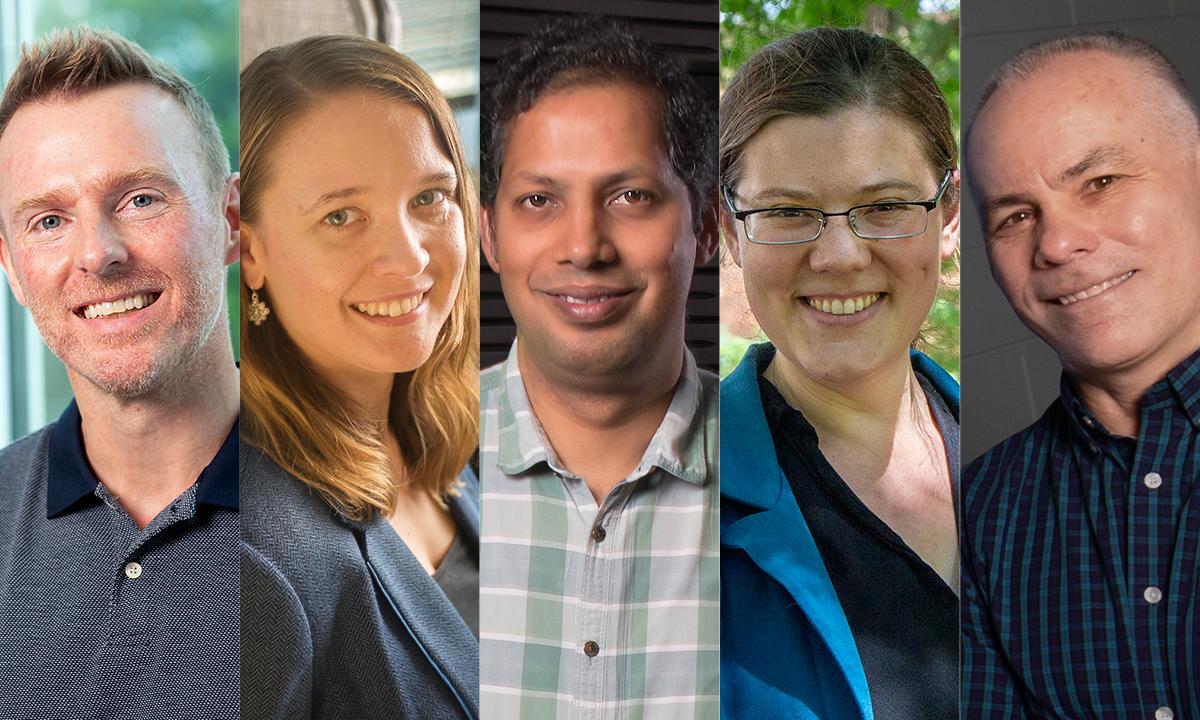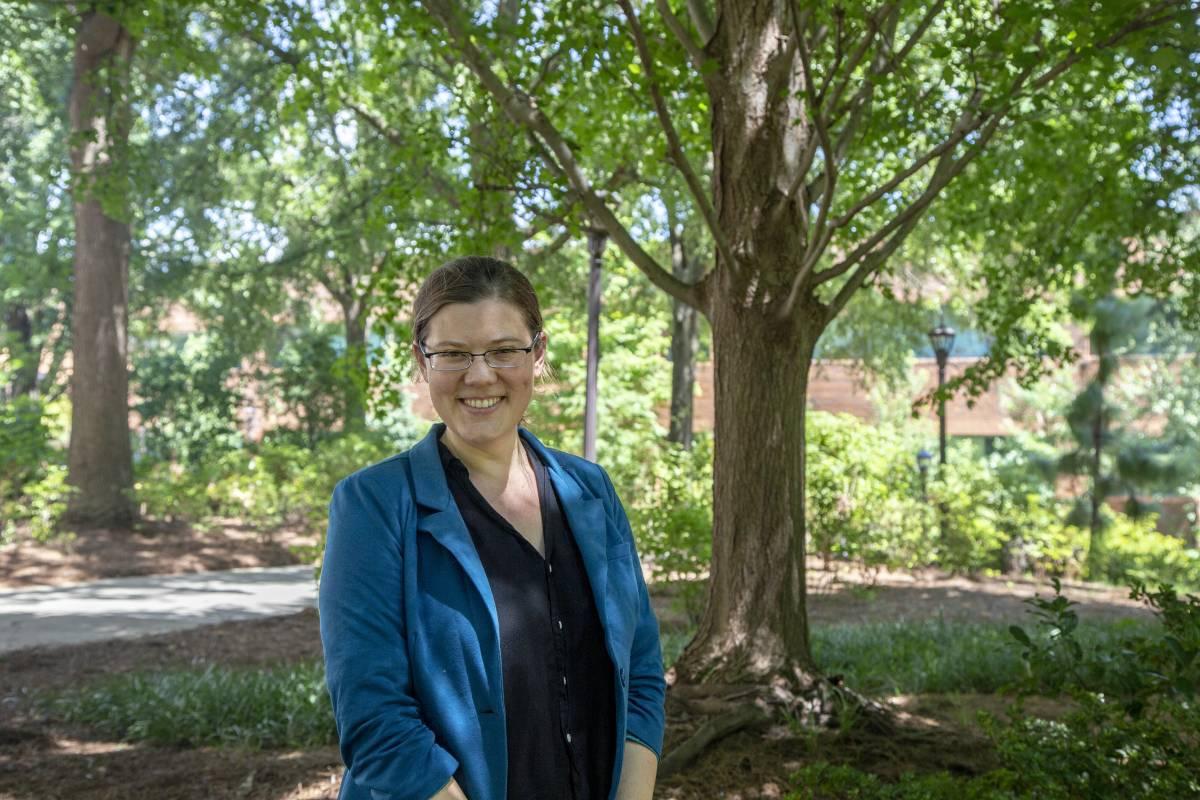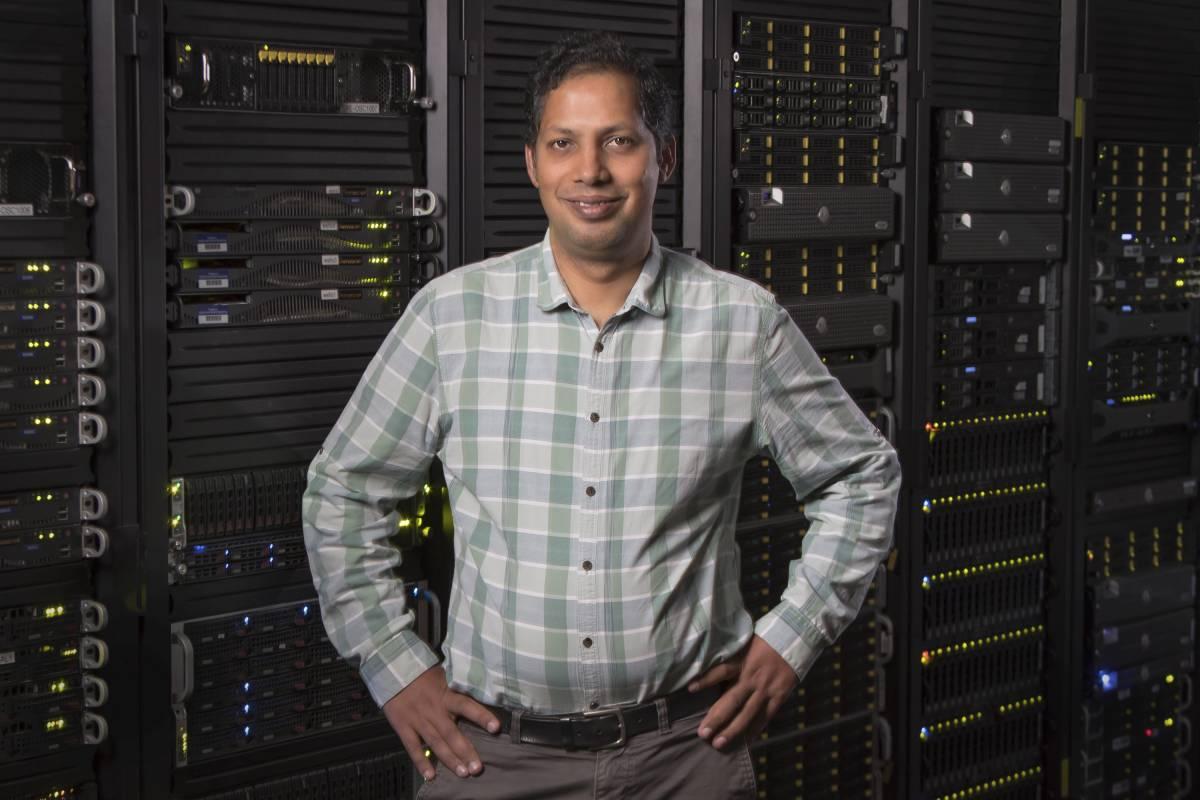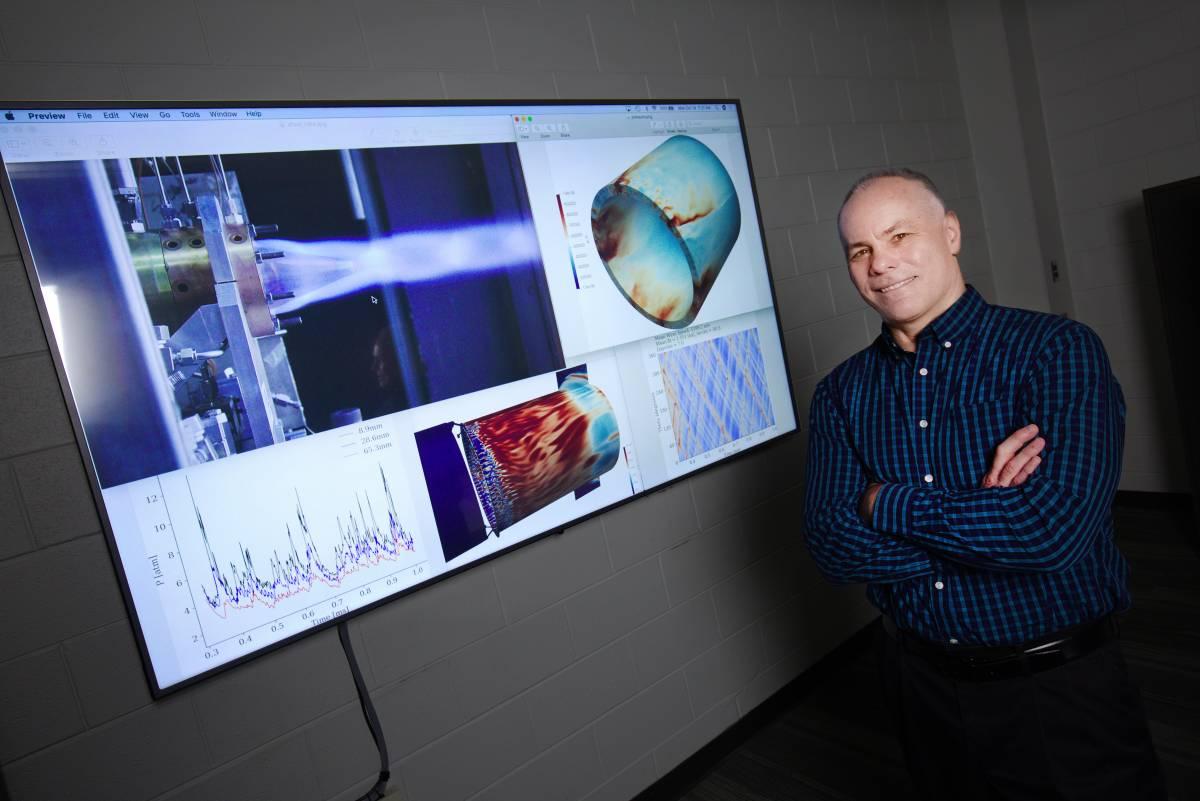For these five engineering faculty, time spent in the private sector proved to be invaluable

They are two worlds, culturally apart, different as night and day. One is viewed as a calling to the curious, a realm of enlightenment; the other, an answer to marketplace needs, an engine of economics.
Academia and industry. Campus vs. corporate. Exploration for new knowledge — or to move a company or industry forward.
But for many College of Engineering faculty, such shorthand dichotomies are false. Every day, they show up for work to conduct sophisticated research, teach classes, mentor students and serve on committees. They live the life of the scholar-instructor, yet they bring something extra: the experience of working in the private sector, in all its relentless pursuit of fast results and shareholder value.
This experience, they say, generated reward in several forms. Time spent in industry yields valuable lessons to share in classrooms and labs. Here are a few.
Emily Grubert
Assistant Professor, School of Civil and Environmental Engineering
Right now: Big decisions are made in operating big infrastructure like energy, water and transportation systems. Grubert’s research combines decision-support tools with opinion research to improve how those big decisions are made. She generates a deeper, clearer picture of various options, making it easier to compare one against another.
Her time in industry: Stints at McKinsey and Pacific Gas & Electric gave Grubert an up-close look at massive infrastructure systems and helped her develop scenario-based models to guide decision making. “I chose McKinsey because I wanted to work with refineries, power plants, mining companies and other big infrastructure [entities] in a way that didn’t require me to go work for them,” she says. “So, in my interview, I let them know I would quit in a couple of years to get a Ph.D.”
Takeaways from the private sector: “On the academic side, we tend to under-value process and governance in decision-making,” Grubert says. “We focus on a few facts — we’ll do an analysis and say, ‘option X is 20% better.’ But that doesn’t mean that the 'better' option will be what someone in industry will choose because there are other considerations. There’s a whole lot more to decision making on the private sector side.”
The perfect-fit field: “Interdisciplinary” is an important word to Grubert, and she was glad to find that Georgia Tech embraced a multi-disciplinary view of research. “I view engineering as a way to apply science to help people thrive in the world, and that includes social science,” says Grubert. “Once you start working in civil and environmental engineering, it’s amazing how important social science is, because you’re working with so many people.”

David Frakes
Associate Professor, Wallace H. Coulter Department of Biomedical Engineering and School of Electrical and Computer Engineering
Right now: The Frakes Lab at Georgia Tech is brand-new — he arrived at his alma mater in the summer of 2020 — but its focus is to explore and model new kinds of medical devices. One noteworthy niche: He aims to design devices that fit and work across a population of patients by testing the devices on thousands of virtual people. “Machine learning is in everything these days,” he says. “If you have data, you have a big advantage.”
His time in industry: In the early days, it was hedge fund management on Wall Street. Later came a five-year stop at Google, where he spearheaded mobile imaging projects. Most recently, Frakes led an Apple team that developed algorithms driving the camera software inside the iPhone 11. Along the way, he even started two companies.
Takeaways from the private sector: Frakes runs his lab like a startup: with quarterly objectives, “go and no-go” decisions and a sense of urgency. “In academia, there may not be a clear finish line on the calendar or work plan,” he observes, “but in a startup, your time is not infinite. You only have so much runway.” This entrepreneurial approach to research, he adds, is appealing to students. “It’s just fun to have skin in the game in the lab every day.”
The ‘village in the room’: At Arizona State, Frakes helped launch the BRAIN Center, an industry-university research collaborative to develop neurotechnologies. He’s applied for NSF funding to do the same at Georgia Tech. The new center would engage multiple companies with a large group of faculty from engineering and other disciplines. “It takes a village to go after certain problems,” he says. “With this center, we’ll be getting a lot of subject matter experts in the room to work on problems too big for any one of them to solve alone.”

Blair Brettmann
Assistant Professor, School of Chemical and Biomolecular Engineering and School of Materials Science and Engineering
Right now: Brettmann develops new technologies and materials to make it possible for products with many different components to be customizable quickly. “In industry, to make a small change to a product, you have to address many issues. So, just changing that one item can take huge amounts of time. A lot of what I’m doing is looking at ways to pair with a computational person to make it faster.” Her research has widespread implications for materials and processes in manufacturing.
Her time in industry: Working for the French materials company Saint-Gobain, Brettmann led R&D projects for new coatings, surface treatments and other functional materials. “I didn’t do much in the lab — it was really more managerial,” she says. A desire to stay engaged in technical work and to mentor students led her back to campus.
Takeaways from the private sector: “One of the best things to come out of my industry work is project management,” Brettmann says. “As a principal investigator, I now have seven different research projects. But as a postdoc I only had to focus on one or two things at a time. My industry experience helped me manage better.”
Some say the grass is greener: “I like to joke that when you’re in industry, you see academics as rich because of the fancy equipment they have. And academics see industry as rich because they have more money to pay people. Also, university researchers focus on getting their name out there, getting funding, helping students. In industry, there’s a lot of time pressure to get a product out the door.”

Mohit Singh
Associate Professor, H. Milton Stewart School of Industrial & Systems Engineering
Right now: Singh conducts research to improve decision making, employing a highly mathematical approach. A large part of his exploration involves designing algorithms to arrive at discrete decisions using fixed variables to decide this-or-that, very quickly. Significantly, he’s moving the field into new ways of using open-data variables to inform the algorithms, thus bridging the separate worlds of “discrete and continuous optimization.”
His time in industry: In a seven-year stint for Microsoft, Singh worked to optimize the process for deciding how data from cloud computing customers should be distributed across computer servers. Factoring in high-demand times, storage needs and other variables, he helped develop frameworks that determined server access, optimizing for both the client and server performance.
Takeaways from the private sector: Industry inspires much of Singh’s research. “I’m currently working on a lot of optimization problems,” he says, “and apart from being fundamental and theoretical in nature, so many of them are motivated by what comes in practice. I want to look at relevant problems.”
The difference is the students: A major motivating factor in Singh’s decision to come to Georgia Tech was the opportunity to guide and mentor students. Most undergraduates don’t do much research, “but you see them grow and develop their own vision.” Graduate students can work on problems for several years. However, in industry, “you only have interns, and you don’t get to see them grow over time.”

Joseph Oefelein
Professor, Daniel Guggenheim School of Aerospace Engineering
Right now: Oefelein uses ultra-powered computing and algorithms to create highly sophisticated simulations of propulsion and power systems such as liquid rocket engines. His simulations and models reveal the interplay between turbulence and the complex physical processes in combustion. The goal is to find new ways to optimize these systems.
His time in industry: Seventeen years with a national laboratory may sound like a government job, but Oefelein’s career with Sandia National Laboratories had him in constant partnership with private industry, working with researchers in energy science to improve the predictability of combustion models. During this time, he always kept an eye on how those models could inform the design of different types of piston, gas turbine and rocket engines manufactured for automobiles, trucks and aviation and space vehicles.
Takeaways from the private sector: “In the classroom, a lot of times I can just naturally answer a question like, ‘Why do I need to learn this?’” Oefelein says. “Not only can I share real-world experience and observations with students, I can give a perspective right away, and in a natural way.” Like the other engineering faculty, the ability to work with students was a motivating factor to return to a campus.
You can’t learn if you don’t share: Having experienced academia, government and industry, Oefelein has a perspective on how all three can work together to address some of the intractable problems facing humankind. “Understanding comes from sitting down with colleagues in different sectors and being able to appreciate all the pros, cons and constraints,” he says. “The more communication that occurs, the better off everyone will be.”
